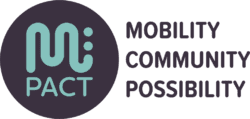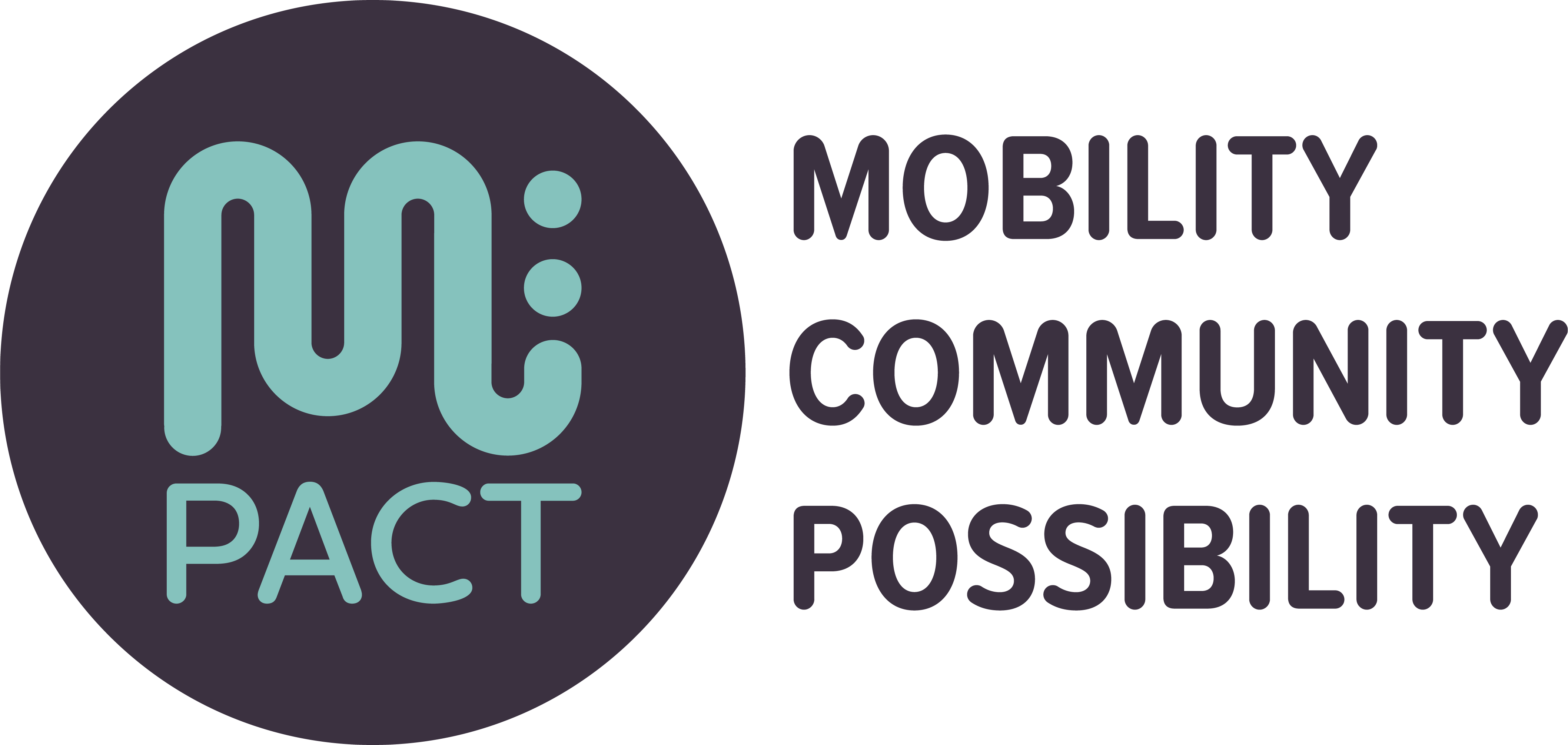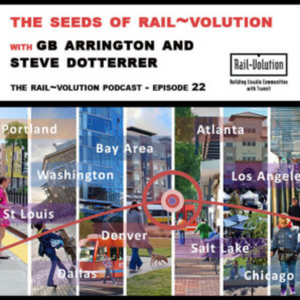Topics:
Originally published on railvolution.org. Rail~Volution is now Mpact: Mobility, Community, Possibility.
or, Rail~Volutionandia – it started in Portland & with public involvement!
Rail~Volution 2019 in Vancouver, BC, marked the 25th anniversary of the Rail~Volution transit and community development conference – 25 years and counting! During the conference, we sat down with two of the people involved from the get-go: Steve Dotterrer and GB Arrington. In 1995, Steve was head of transportation planning for the City of Portland and GB worked at TriMet, the transit agency in Portland.

The first conference rose out of a smaller, local convening, the Regional Rail Summit, that grew out of Portland’s effort to extend its first light rail line. It was the beginning of conversations still familiar today: about land use and development around transit, coordinating across agencies and how to pay for new investments.
Public involvement was central from the start. Steve describes neighborhood house parties where local university students walked residents through a slide show about ideas for a transit system. The community’s questions – what’s it going to do to my neighborhood? what’s it going to look like? how will we pay for this? and more – guided the content of the summit. When the next summits attracted more attendees from farther away, Rail~Volution was born.
As GB says, one of the big unknowns in those days was the development potential along light rail. Would transit-oriented development (TOD) work?
The conference grew organically, meshing local issues with experience and learning from all across the US. The translation from the local to the national (and back again) attracted and involved a mix of people. Over time, Rail~Volution was the place for policy makers at the federal level to hear about the challenges on the ground, which in turn, influenced national policy (listen to the podcast for examples).
On the podcast, GB and Steve recall stories from different conferences, reflect on the legacy of Rail~Volution and look to the future.
Catching the next wave will mean continuing to push for true collaboration, continuing to take risks and continuing to bring in new voices. And, Steve hopes that Rail~Volution can help us say what the role of Autonomous Vehicles should be in livable communities.
To make the promise of transit, new mobility options and transit-oriented development a reality for all communities, it will require putting equity at the center. For the first years of Rail~Volution, “We were so interested in rolling the ball, we didn’t think about the implications,” GB says.
After the podcast, we asked GB and Steve some follow up questions, which they kindly took time to answer:
Did you have a sense that you were changing how the field worked, how it approached new transit investments?
GB Arrington: Yes, without a doubt. That was the idea. We were showing people it was not enough to build transit, but by marrying transit and land you got a better outcome for both. That was a new idea at the time and Rail~Volution was making the case that transit investments needed to include land use. Of course that’s common practice today, but it was a new idea when we started.
Steve Dotterrer: I suppose the major objective was to see that transit and transportation investments were always made with some larger vision in mind, usually related to land use. This was not really a new idea, but early-on transportation choices were often made because a right of way was easily available, and not because some larger objective was being served by the transportation investment. Rail~Volution was intended to say that the larger, non-transportation objective was always necessary.
Can you share an example of leadership that made a difference, perhaps someone sticking their neck out in a way that facilitated change or got something to happen that otherwise would not have?
Steve Dotterrer: A large one would be then-city commissioner Earl Blumenauer’s decision to create a city “Regional Rail Program.” After the decision to build the first LRT line, the idea of a system was not really there until Earl said that’s what should happen. And it has, through his pushing it and then having others take it up as well.
There are two lessons of leadership here. First, expect resistance but don’t give up. Regional agencies like Tri-Met and Metro took umbrage that the city would be pushing something regional, but they were finally convinced that the city could be an ally, and not a competitor. Second, Earl invited others (suburban counties and cities, other interest groups) to find their own objectives that would be served by the regional system — and adopted those objectives to gain their support.
GB Arrington: There are countless examples. Planners took new ideas home and adapted them. Officials were inspired to do things differently, had practical examples to draw on and a network to rely on. Change does not happen without leadership. It manifests itself in many ways at many levels. A core part of Rail~Volution’s job is to provide the examples, inspiration of what can be, to support leaders to make change.
- Rail~Volution changed the case for transit and thereby helped spur new LRT and streetcar investments across the US by showing transit investments were a city-shaping tool, not just a people-moving strategy.
- Transit agencies pivoted and created TOD programs, as did cities and MPOs.
- Rail~Volution helped change how FTA evaluates transit investments by considering land use and affordable housing.
What was the most difficult thing or biggest challenge? Is it still the same?
GB Arrington: Cities are living things; they constantly evolve and require ongoing vigilance. You are never done. The challenge is to adapt, keep at it, to know what to do next. In other words, there is a continuum. Rail~Volution provides a living urban laboratory to draw on. The challenges and changes, and examples of how to respond. The so-called innovative cities like Portland solved one problem, but they could not declare victory. They needed to move onto a new set of challenges which arose.
Steve Dotterrer: The biggest challenge is always looking for the new issues and new potential allies — and not rejecting them because they come from a different place.
What would your advice be to someone starting out now in city planning or with an agency or a consulting firm?
Steve Dotterrer: While it is important to know your stuff (technical expertise, etc.) the critical difference is “looking outside the window” beyond your expertise, agency or profession — that’s where the issues, answers and allies will come from.
GB Arrington: Whatever your path, it comes down to two things — communication and networks. Rail~Volution can help you with both. 1) Schools don’t teach communication, but the folks that advance technically or as leaders are good at communicating. 2) Build your network; firms and government are about people and ideas. Networks strengthen both.
What idea or innovation is less well-known than it should be – what aspect of the work to build livable communities with transit?
GB Arrington: How to solve tomorrow’s problem.
Steve Dotterrer: I don’t have a specific one to mention in terms of Rail~Volution. What I will say is that it is a good idea to keep your innovations that failed in your back pocket — document them, understand why they failed. When conditions change, new allies arrive, etc., the idea may turn out to have a life.


